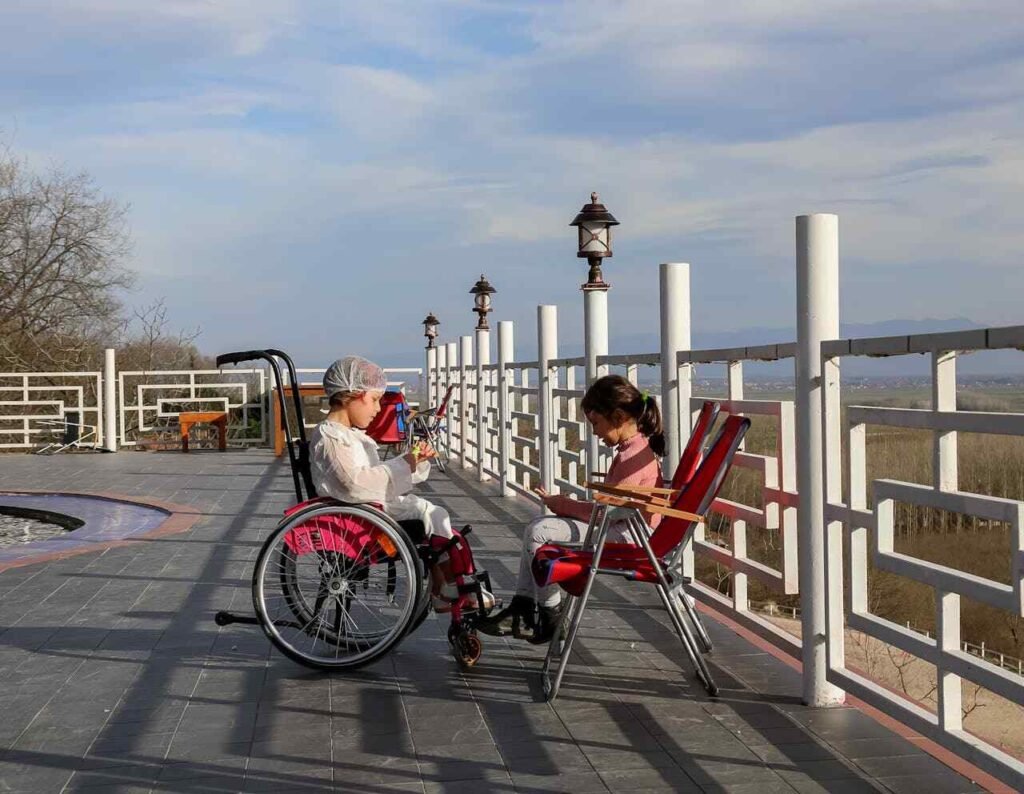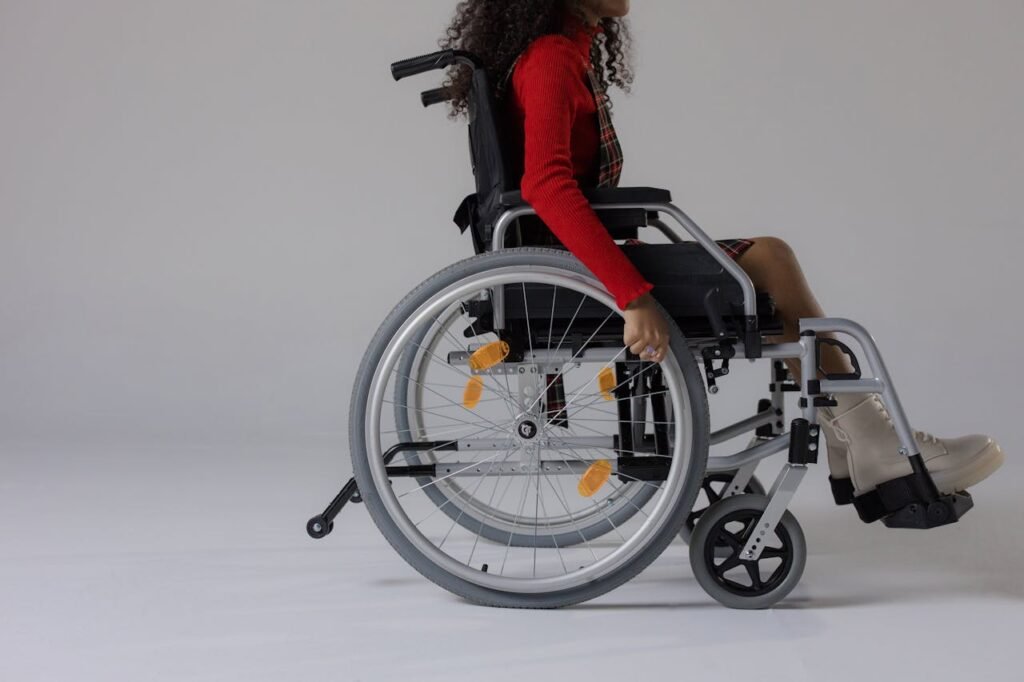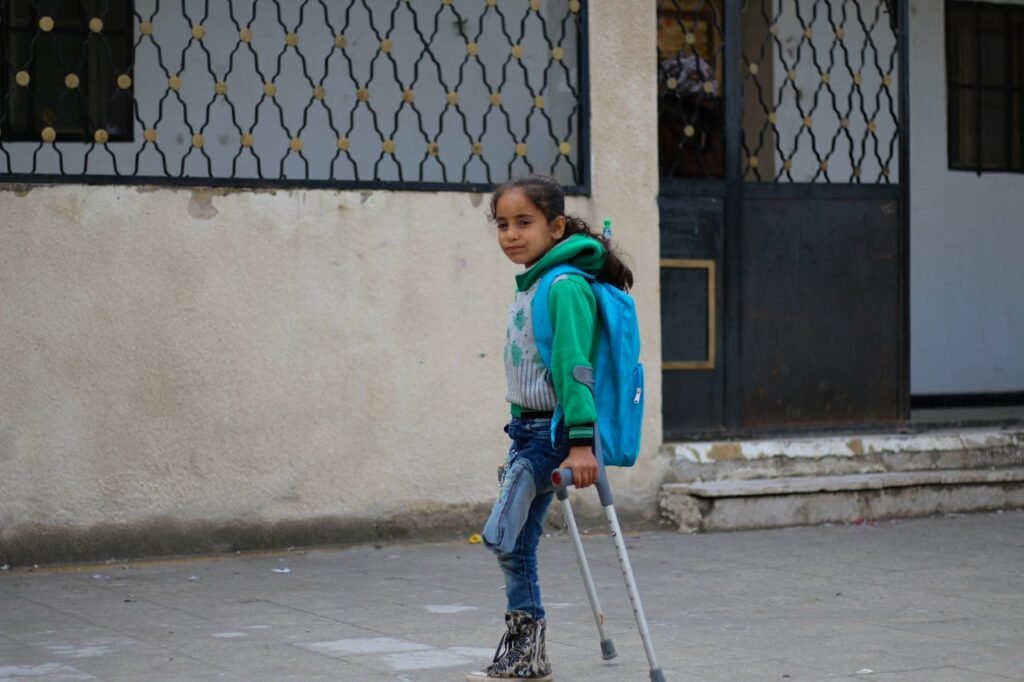Children born with limb deficiencies or those who lose a limb early in life often face unique challenges as they grow. Their muscles may not fully develop. Their nerves may not send strong signals. And their bodies, still changing with age, may struggle to adapt to prosthetics or physical therapy alone.
This is where EMS—or Electronic Muscle Stimulation—can make a gentle but powerful difference.
By delivering small, safe electrical signals to specific muscles, EMS helps young bodies stay active, strong, and better prepared for prosthetic training. But using EMS with children isn’t the same as using it with adults. It needs special care, simple protocols, and a thoughtful, child-focused approach.
In this article, we’ll guide you through everything you need to know about pediatric EMS protocols for limb deficiency therapy—from choosing the right settings to building safe daily routines. Whether you’re a parent, therapist, or clinic owner, these insights are designed to help you support a child’s physical progress with care and confidence.
Let’s begin by understanding how EMS fits into pediatric limb therapy.
How EMS Supports Pediatric Limb Therapy
Activating Underused Muscles Gently

Children with limb deficiencies often have small or underdeveloped muscles near the missing limb. These muscles may exist but never got the chance to grow strong.
EMS sends a gentle signal through pads placed on the skin. That signal tells the muscle to tighten and relax. It’s like a tiny wake-up call.
This helps keep those muscles active—even if they’re too small to move on their own. Over time, that builds strength and helps the body use other parts more easily.
Helping Pediatric Neuroplasticity Work for You
Children’s brains are amazingly flexible. Their brains can learn and adapt better than adults.
When EMS gently activates a missing-limb area, the brain notices. It starts understanding that this part of the body is real, even if it looks different.
This helps build new pathways between brain and muscle—stronger control, better awareness, and easier use of prosthetics later.
Using EMS early, in a safe and consistent way, supports this powerful brain-muscle learning process.
EMS as Part of a Holistic Therapy Plan
EMS isn’t a stand-alone fix. It works best when it’s part of a full therapy plan designed for kids.
Physical therapists often combine EMS with play. The child might use toys, reach for colorful objects, or do mirror exercises while EMS runs.
This makes therapy feel fun, not medical. It also helps the child connect the feeling of EMS with real movement, not just a strange buzz.
When EMS is woven into creative, child-friendly moments, it becomes powerful without feeling clinical.
Pediatric EMS Protocols: A Step-by-Step Approach
Why Protocols Matter More for Children

Children are not just small adults. Their bodies, skin, muscles, and nerves are still growing. This means their response to EMS is different from what we see in teens or adults.
That’s why we don’t simply reduce the adult settings. Instead, we build child-focused protocols—from the ground up.
Protocols are important because they create structure. They tell us how long to run EMS, where to place the electrodes, what intensity to use, and when to stop. For children, this structure gives safety. For parents and therapists, it gives clarity.
And most importantly, it ensures EMS becomes a helpful, positive experience rather than something that feels strange or overwhelming.
Preparing for the First EMS Session
Before any EMS session begins, preparation is key.
First, the child needs to feel safe. Show them the device. Let them touch the pads with their hands. Explain in simple words what EMS does—something like, “This little machine helps your muscles learn to wake up and play.”
Let them see the device in action before it touches their skin. You can demonstrate on your own hand first. Then, show how the muscles move gently, like a tiny dance under the skin.
Explain that it won’t hurt. Say clearly that they can ask you to stop at any time. This control gives them confidence.
Choose a quiet, familiar space—somewhere the child feels relaxed. Avoid crowded, noisy areas, which may make them anxious.
Keep their favorite toy or comfort item nearby. This helps create a calm emotional setting before physical therapy begins.
Electrode Placement for Small Limbs
Electrode placement in pediatric EMS requires careful attention. Children’s limbs are smaller, and their muscles are harder to locate.
Start by finding the muscle belly—the thickest part of the muscle near the stump. This is usually where the signal will work best.
Pads must be smaller than adult versions. In most cases, pediatric EMS devices come with specially sized electrodes that fit small limbs without overlapping.
Never place electrodes on joints, bones, or directly over scars or broken skin. If you’re not sure, always consult a physiotherapist for a first session.
Take a picture of correct placement during your clinic visit. This gives parents or caregivers a reference point for home sessions.
For safety, avoid placing electrodes across the chest, near the neck, or on the front of the throat—even in children. These areas are sensitive and should be handled by professionals only.
Starting Settings: How Gentle is Gentle?
The first EMS session for a child should always begin with the lowest possible setting. You’re not trying to move the limb right away. The goal is to introduce sensation.
In many pediatric cases, a pulse width between 100–200 microseconds and a frequency between 20–35 Hz is sufficient. The intensity should be just enough for a soft, visible twitch—or even just a feeling of tingling.
Some children may not feel the pulse right away. That’s okay. Don’t rush. Sensation builds slowly, and each child’s nerve sensitivity is different.
Run the session for no more than 10 minutes during the first few days. Observe how the skin reacts. Check for any redness, dryness, or irritation afterward.
If the skin looks good, you can slowly build to 15–20 minute sessions, two to three times a day—depending on what the therapist recommends.
Monitoring and Adjusting Over Time
As the child’s body adapts, the EMS protocol must grow with them. Muscles become more responsive. Sensation improves. The child may also become more comfortable with the device.
At this stage, intensity may be increased slightly—but only with guidance. Never raise the intensity to the point of visible strain, pain, or fear.
If the muscle starts to contract too hard or looks stiff during the pulse, reduce the setting. It should always look smooth and rhythmic, never jerky or tight.
Continue to rotate pad placement slightly each week. This protects the skin and allows neighboring muscles to activate.
Over time, you may also introduce EMS in different postures—seated, lying down, or while holding a toy with the other hand. This helps integrate muscle activation into daily function and play.
Making EMS Engaging and Child-Friendly
The Importance of Fun in Pediatric Therapy

Children thrive in environments that feel playful, not clinical. While EMS is a medical tool, the way it’s introduced can turn it into something curious and even fun.
If a child sees EMS as a game or a moment of attention and bonding, they’re far more likely to look forward to it each day.
Therapy doesn’t need to feel serious to be effective. In fact, the more relaxed the child feels, the better their muscles and nerves respond.
That’s why one of the most powerful tools in a pediatric EMS routine is imagination.
Turn EMS Into a Story
Before placing the electrodes, tell a story. Say, “These little stickers are special buttons that help your muscles get strong like a superhero’s.” Let them name the pads or pretend they’re rocket boosters.
Once the EMS is on, talk them through what they feel. Ask, “Do your muscles feel like they’re dancing?” or “Can you feel your little muscle engine turning on?”
Using stories transforms the experience. It gives the child ownership over what’s happening. And that ownership builds trust.
For older children, you can explain the science in simple terms. Talk about how the body talks to the brain and how EMS helps them become stronger from the inside.
This turns EMS from a passive therapy into an interactive experience.
Create a Routine Around EMS
Children feel safe in routines. When they know what to expect, they relax and participate more willingly.
Choose a consistent time of day—after breakfast, before nap time, or right before storytime at night. Pair EMS with another calming activity, like listening to music, coloring, or watching a quiet cartoon.
Keep the space warm and comfortable. Use a soft chair or floor cushion. Let the child hold a toy in their non-EMS hand.
After the session, give praise. Say, “You did great! Your muscles are getting stronger every day.” Reinforce their effort, not just the outcome.
Routine and repetition build comfort. And comfort builds progress.
Caregiver and Therapist Partnership
Why Caregivers Play a Central Role
EMS might be set up by a therapist, but it lives at home with the family. That’s why caregivers—parents, grandparents, even siblings—play the biggest role in making EMS work.
They’re the ones who prepare the space, apply the pads, monitor reactions, and encourage the child to stay calm.
But more than anything, caregivers model emotional safety. If the caregiver is relaxed and confident, the child will be too.
If the caregiver seems unsure, the child may resist—even if the therapy is perfectly safe.
That’s why it’s so important for caregivers to feel fully trained, fully supported, and never rushed. This builds trust on both sides.
Working Closely With a Pediatric Therapist
Pediatric therapists are trained not just in muscle science, but also in child behavior. Their role is to guide, adjust, and coach—not just the child, but the whole family.
Ideally, the therapist should conduct the first EMS session and be available for regular check-ins.
They can help caregivers identify the right muscle groups, choose the best times of day, and create age-appropriate language to explain the process.
Therapists also help troubleshoot—if a pad doesn’t seem to be working, if the child is nervous, or if there’s skin irritation.
Many therapists also use EMS alongside other tools—such as mirror therapy, games, or group sessions. This adds depth to the therapy and keeps it dynamic.
Open communication between caregiver and therapist is key. Keep a shared log or notebook to track each session, what settings were used, and how the child responded.
This makes it easier to adjust over time and ensures everyone is working together toward the same goal.
Watching for Emotional Responses
Children may not always have the words to say, “I’m scared,” or “This feels funny.” Instead, they might cry, wiggle, or resist.
These are not signs of disobedience. They’re signs of discomfort or uncertainty.
Watch closely during the first few sessions. If a child looks anxious, pause. Ask simple questions: “Does this feel okay?” “Is it tickly or strange?”
Sometimes just slowing down or taking a short break is all that’s needed.
Celebrate any moment of calm or cooperation. Tell them they’re doing something important—and that you’re proud of them for being brave.
Children need to feel safe to grow. EMS therapy is most effective when it’s paired with emotional trust.
Building Structure and Scale for Pediatric EMS Therapy
Turning EMS Into a Scalable Pediatric Rehab Service

For clinics and pediatric therapy centers, EMS is more than a tool—it’s a pathway to expand services, improve outcomes, and increase patient retention. But for this to work effectively, the EMS program must be structured.
Start by offering a dedicated “EMS Familiarization Program” for new pediatric patients and their caregivers. This should include an in-clinic demonstration, a detailed at-home protocol, and follow-up touchpoints over the next four weeks.
Structure this program around clear goals: introducing EMS comfortably, ensuring parent involvement, and confirming child engagement.
This not only builds trust but creates a repeatable framework. Clinics that follow a system tend to see better long-term adoption—and better business outcomes—because they reduce confusion and improve the child’s chances of continuing care beyond initial sessions.
Training Parents as Partners
Clinics that train parents to use EMS confidently at home tend to have higher success rates. These families return more consistently, report better therapy outcomes, and are more likely to invest in personalized support devices.
Offer parent certification mini-sessions or virtual workshops. Keep it simple: demonstrate device handling, share placement visuals, and let them practice while supervised.
Make it clear that the parent is not expected to be a therapist—but a coach and comforter. Parents who feel prepared are more engaged, and engagement translates to compliance.
Provide a printed or digital “EMS Parent Companion Guide” with each EMS starter plan. Include safety checks, session tracking templates, and clear instructions.
This one-time investment in caregiver education can greatly reduce dropout rates and help position your clinic as a trusted, family-friendly destination.
Documenting Progress That Matters
Children can’t always explain what’s working. That’s why visual and behavioral tracking is essential in pediatric EMS.
Encourage therapists to document weekly observations in three areas: physical changes (muscle tone, posture), emotional response (comfort, mood), and functional ability (toy handling, grasping).
This documentation can be done through short video snippets (with consent), therapist notes, or digital logs that families can contribute to.
When parents see proof of progress, they become more invested in continuing EMS therapy. This also builds a story of success for the clinic—helpful for future grant applications, case studies, and partnerships.
If possible, create a library of anonymized before-and-after case studies. Use these in your clinic’s education programs or on your website, showing real outcomes with EMS-supported rehabilitation.
Device Management and Custom Protocols
Every child is different. Clinics should offer customized EMS protocol planning, based on limb type, age, muscle development, and emotional readiness.
This planning should not stop at the first visit. Schedule monthly protocol reviews, even if therapy sessions are paused. This keeps the family engaged and provides a natural reason for re-engagement.
Consider working with EMS device manufacturers like Robobionics to co-develop clinic-friendly bundles that include the BrawnBand EMS unit, pediatric-size electrodes, user guides, and starter plans.
You can also create “EMS kits” for home use, rented out through the clinic. This adds a revenue stream while maintaining clinical oversight on home therapy.
Include support services in your EMS packages—such as virtual setup calls, WhatsApp-based check-ins, and technician support. The more touchpoints you offer, the more likely families are to continue therapy.
Building EMS Into Broader Pediatric Programs
EMS works best when integrated—not isolated.
Bundle EMS into your pediatric prosthetic readiness or limb deficiency therapy offerings. Create full programs that include physiotherapy, EMS, mirror therapy, and social play therapy.
This allows you to position your clinic as a one-stop rehabilitation center for pediatric limb difference care.
From a business standpoint, this creates longer treatment timelines, smoother care transitions, and stronger relationships with families.
It also opens up partnership opportunities with prosthetic providers, rehabilitation hospitals, and NGOs working with pediatric limb differences.
If your team works with schools or pediatric support groups, consider introducing an “Early Strengthening Program” that incorporates EMS as part of school-readiness or activity-readiness support.
You’ll find that parents are far more open to EMS when it’s introduced as part of a broad developmental care plan—not just as a medical tool.
Long-Term Planning and Growth with EMS
Adapting EMS as Children Grow

A child’s body changes quickly. Muscles grow. Nerve patterns mature. Strength improves. And their needs shift—sometimes from month to month.
Because of this, EMS routines must grow with the child. What works for a three-year-old with a limb difference won’t be the same at age seven, or twelve.
You don’t need to change everything overnight. But it’s important to check in regularly with your child’s therapist. They can help review what’s working, what could be better, and when to adjust settings, duration, or pad placement.
As the child begins to use a prosthetic more, EMS may shift focus—from general muscle activation to specific functional goals, like grip strength or wrist stability.
Eventually, EMS can even become a tool the child uses independently, with light supervision. This gives them confidence and ownership of their body.
Treat EMS as a companion—not just to recovery, but to growth. It supports development, self-image, and independence every step of the way.
Moving Toward Prosthetic Use
Many pediatric EMS protocols are designed with one big goal in mind: prosthetic readiness.
For children with upper-limb differences, the use of a myoelectric prosthetic—like the Grippy Bionic Hand—depends entirely on strong, clear muscle signals.
EMS helps build that signal over time. It trains the brain and muscle to work together, so that when a prosthetic is introduced, the child already has a head start.
They know how to activate the right muscles. They’ve felt that contraction before. The device feels less foreign—and more like an extension of their own body.
For lower-limb differences, EMS helps with balance, posture, and strength—making walking with a prosthetic safer and easier.
The sooner EMS begins, the smoother this transition becomes.
When to Pause or Shift the Plan
Not every stage of life will be right for EMS. Children go through phases—illness, growth spurts, emotional stress—that might make sessions harder to manage.
If the child starts resisting strongly or shows signs of discomfort, don’t force the session. It’s okay to pause. It’s okay to simplify.
You can always reintroduce EMS later, when the child is more settled or the schedule allows for it.
Therapy is a long journey. What matters most is consistency over time—not perfection in every moment.
Keep the tone light. Keep communication open. And always listen to what your child is telling you—through words, behavior, or body language.
The Power of Early Intervention
Children’s brains are most adaptable in the early years. Starting EMS during this window gives them the best possible chance at full use of their muscles, easier prosthetic control, and better overall development.
This doesn’t mean rushing into it. But it does mean being proactive.
If your child is under five and has a limb difference, talk to your therapist about EMS. Even a few minutes a day can make a real difference.
For older children and teens, EMS is still valuable—especially as they begin exploring independence, sports, or self-care routines.
No age is too late to benefit. But earlier use opens more doors.
Final Thoughts: Building Confidence, One Pulse at a Time
A Brighter Future for Children with Limb Differences

EMS might seem like a small thing—a quiet pulse under the skin, a gentle rhythm that comes and goes. But for a child learning to move, explore, and grow with a limb difference, it’s much more.
It’s a signal that their body is alive. That their muscles can grow. That they can take part in the world with strength, balance, and joy.
When EMS is used with care, patience, and consistency, it becomes a foundation—not just for movement, but for confidence.
And that confidence touches every part of their life—how they play, how they learn, how they show up in the world.
At Robobionics, we believe every child deserves that chance.
Ready to Begin EMS Therapy at Home?
If you’re a parent, therapist, or caregiver looking to explore pediatric EMS for limb deficiency therapy, we’re here to help.
Book a free session with our experts at www.robobionics.in/bookdemo
We’ll walk you through everything—device selection, safe settings, age-specific tips, and how to build a routine that feels calm, doable, and empowering for your child.
Let’s give them more than just therapy. Let’s give them a future of movement, strength, and pride in every step forward.



